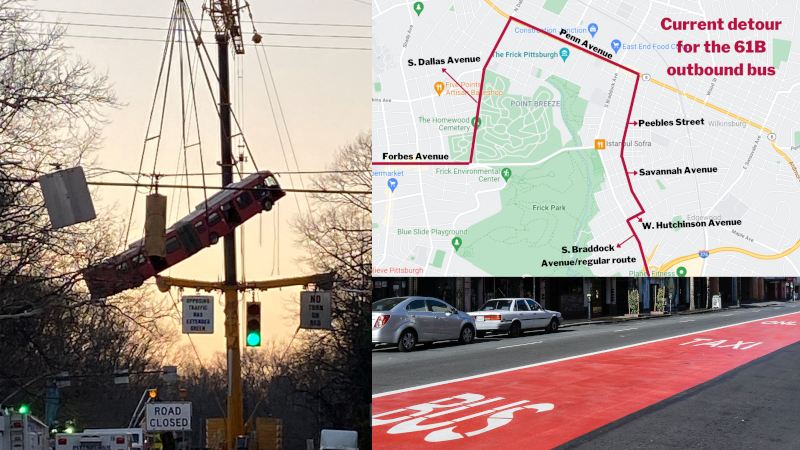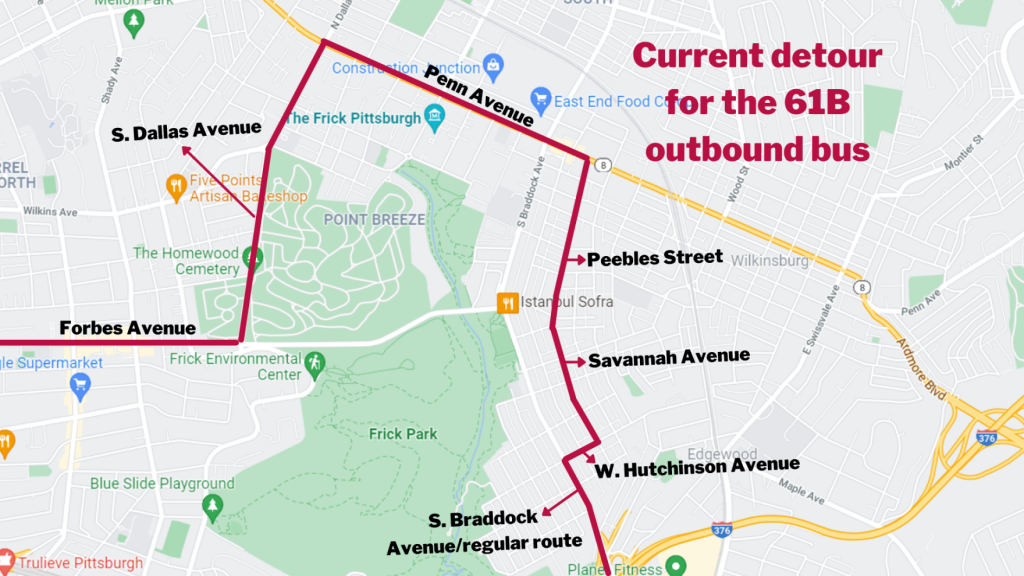
Make the Bus Fly! PGH Bridge Collapse Has Severed Communities from a Critical Corridor, But Dedicated Bus Lanes & Green Lights for Buses Can Speed Up Recovery
It is through sheer luck that no one was killed in the collapse of the Fern Hollow Bridge. It is through community care that everyone was rescued.
But community safety should not be left to random chance and volunteerism.
The bridge collapse was the result of decades of policy that shifted funding away from community needs and towards projects that benefit the wealthy and powerful. This is true at all levels: local, state, and federal.
The new federal infrastructure mega-bill won’t save us from bridge collapses, climate disaster, nor our worsening economic and racial disparities if its expenditures follow the example of previous decades. The Infrastructure Investment and Jobs Act (IIJA) contains the highest level of funding available for highway expansion in U.S. history. These billions of dollars will only lead to more emissions, congestion, traffic deaths, and urban segregation if we don’t insist on change. Our tax money needs to be used instead for transit-forward projects and the repair or even teardown of our overbuilt highway infrastructure.
We need to shift the paradigm of how and for whom we spend our tax dollars. Infrastructure investment needs to pull people out of poverty. It needs to save us from this climate crisis. It needs to create opportunities that are accessible to all.
We can start this shift as we deal with the immediate aftermath of this bridge collapse.
In the short term, we should look to the example of Boston, Chicago, San Franciso and Washington DC. These cities have implemented pop-up bus-only lanes, transit signal priority, and queue jumps to speed up transit on their streets. We can do the same here. It would ensure that Port Authority buses, paratransit vehicles, and school buses can move quickly through the detour.
The Fern Hollow Bridge must be rebuilt with people riding buses and bikes, pedestrians, and community members at the forefront of planning and design. This needs to be the frame for decision-making about all public infrastructure. Locally, the City of Pittsburgh can do this by adopting the recommendations of the Pittsburgh 100 Days Transit Platform. At the state level, politicians need to stop state police from siphoning billions away from a fund intended for bridge maintenance, and the state needs to pass legislation for expanded, dedicated transit funding. On the federal level, USDOT needs to build policy to ensure that states and localities spend infrastructure money they receive through formula funds on projects that further equity and leverage the funds that it directly controls to do the same.
As organizers for community justice, we can build the movement to make this shift. But it won’t be easy. We need to be like the community members who formed a human chain to rescue all of the victims of the Fern Hollow Bridge collapse and organize together. We can change the narrative: infrastructure spending is not about things, it’s about people.
Bus detour information
While conversations about rebuilding Fern Hollow Bridge continues, the 61A and 61B buses are currently following this detour: Forbes > S. Dallas > Penn > Peebles > Savannah > W. Hutchinson > S. Braddock.
